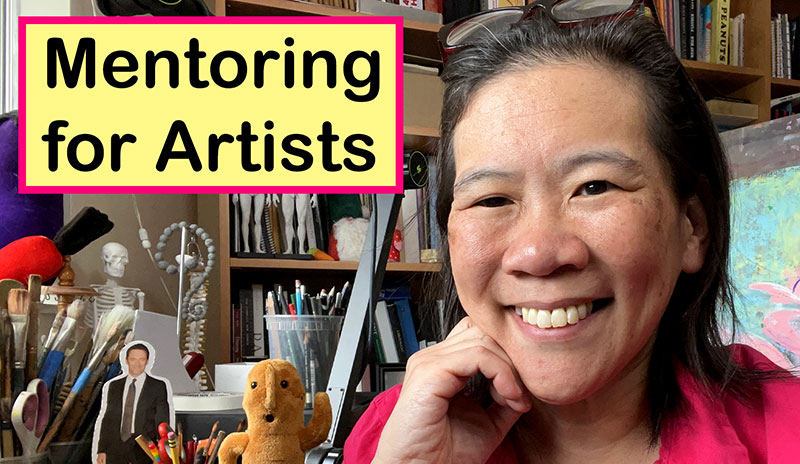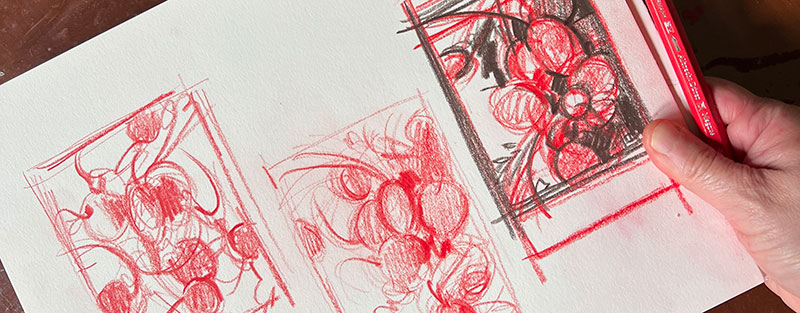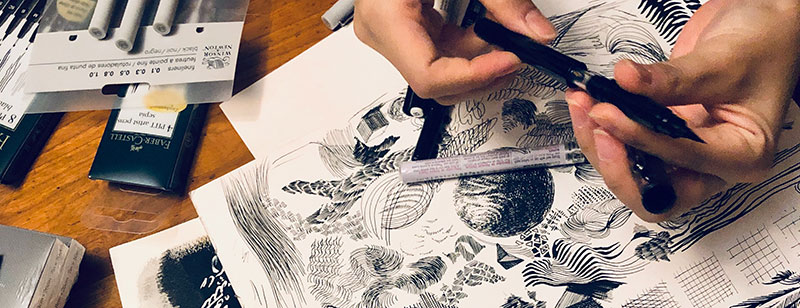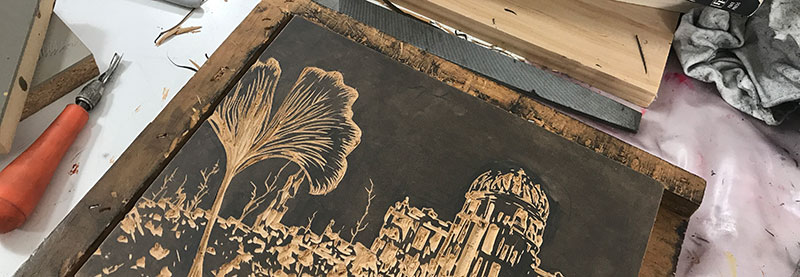Table of Contents

Identify the clichés
Take the initiative to create artworks that demonstrate your thinking process, that pushes beyond the most literal art cliché.
In fact, the best way to combat the danger of a cliché is to eliminate that option immediately.


When Prof Lieu does brainstorming exercises with her studio art classes, she asks the students to draw three sketches that represent the most obvious, literal, and cliché sketches they can possibly come up with in response to the assignment prompt.
This identifies essentially the most boring, generic options for any given prompt, allowing students to move past those options and come up with ones that are more unusual!


Eliminate the cliché
For example, if you are given a prompt that is called “time,” do you think you are the first person to respond to that prompt with an image of a watch, an alarm clock, or hourglass?
Try it right now, do a Google Image search for “time,” and see what images pop up.

Throw out those watches, hourglasses, and alarm clocks and then see what you come up with next, that’s when the artistic thinking process really begins.
If you’re not sure what the cliché is for a given subject, do a Google Image search for that subject and see what images show up the most frequently is. Those images are your answers for what not to use!

Express your point of view
Admissions officers are looking to see much more in your portfolio than several artworks that are clearly intended to be purely art class assignments to foster practicing your technical skills.
As an artist, you’ll want to express an opinion, a narrative, a mood, an emotion, perhaps a political statement even, etc.

Show in your pieces that you are engaging with your subject matter beyond just being visual eye candy or a mindless technical exercise.
Make it evident that you are thinking about your subject matter, and brainstorming ideas for your pieces.

You don’t have to look far for ideas
Sometimes, what might seem like a mundane every day ritual to us might actually be a highly compelling narrative to depict in an artwork.
In one of Prof Lieu’s Design courses, a student once created a collage about putting on makeup every day.
Lots of people put on makeup everyday, it’s easy for any of us to make an assumption that there would be nothing unique about that subject.


Anyone can make an artwork about makeup, but the difference here is that the student’s depiction of makeup was a statement about what role makeup played in her life.
The student explained that she “hated her face,” and that the process of applying makeup for her was a way for her to cover her face, to “hide” her own facial features.
The makeup items were actually a vehicle for opening a conversation about beauty, self, and identity.

Ideas take effort & initiative

There’s a common misconception among students that coming up with an idea means waiting around until a bold of lightning strikes.
Nothing could be further from the truth. Brainstorming takes time, work, initiative, and intent.
Tell your average person to “come up with an idea,” and almost everyone will sit down and start brainstorming, without writing a single thing on a sheet of paper.
Brainstorming is only effective if you put your ideas on paper, you’ll have a visual trail in your sketchbook of your progression of ideas and be able to refer back to them later.
Don’t run through your ideas in your head and eliminate possibilities before you’ve even given them a chance.


Sometimes an idea that sounds terrific in your head doesn’t come across so well once you put it down on paper.
The opposite is also true, an idea that you may have dismissed in your head might actually demonstrate a lot of creative potential once it’s been realized on paper.

Put your ideas down on paper
Most of sketches and ideas create won’t make it into your final artwork, so many will get tossed along the way!
Every sketch, and sometimes especially the bad sketches are what are critical to the final product.

Sitting down and trying to work out an idea in your head is basically the worst way to come up with ideas.
Prof Lieu has watched students in her studio art classes literally sit at a desk as their means of coming up with ideas. This is never productive, and you will have nothing to show for that process!


Put it down on paper. Even if what you write or sketch sounds or looks like complete gibberish, do it anyway.
Avoid the temptation to judge what you write down, brainstorming is not the time to be trying to figure out what is going to get you great results or not!


Barf out your ideas, meaning that you give yourself the license to entertain literally any idea, no matter how idiotic it sounds by getting it down on a sheet of paper.
The priority of this process is to spill out as many options as possible, in a completely unfiltered way so that nothing gets left behind.

Be patient with brainstorming

Brainstorming is neither fast nor immediate. Fill several sketchbook pages, go eat dinner, come back and sketch some more.
Repeat for at least 2 more days, and then maybe, if you’re lucky, you might just have something worth pursing.
Yup, it’s that much work to brainstorm an idea that has actual potential to go somewhere.
Develop that idea further
You may have an idea you are excited about and that you see tremendous potential in, but that’s not the same thing as developing the idea and reaching a point where it’s actually a viable option as an artwork.


In the linoleum block printmaking tutorial, you can watch Prof Lieu conceive of an idea, research a topic, search for reference images, walk through every possible option with sketches, create more detailed thumbnail sketches, and finally follow through to complete a finished artwork.

The entire process, from beginning to end is long and not glamorous at all.
Do the work and it will pay off, a well planned artwork means a more efficient work pace and cuts back on back tracking and wasted art supplies.



